Reviews
Barbet Schroeder
USA, 1992
Credits
Review by Jenny Jediny
Posted on 19 October 2009
Source Instant Netflix
Categories 31 Days of Horror VI
There are moments when Single White Female feels like a chick flick gone mental; in the seventeen years since the film was first released, the tension between roommates Allie and Hedy—curiosity that blossoms into obsessive love-hatred—hasn’t lessened in its effectiveness. While this is in part due to the talent of both actresses involved, Single White Female is also, despite its contrivances, one of the most disturbing portrayals of the ugly—and in this case, deadly—nature of female friendship.
The movie pivots around Allie’s co-dependency, and the ludicrous idea that although she can comfortably afford her enormous, rent-controlled Upper West Side apartment, she can’t bear to be alone in it after kicking out her cheating fiancé, Sam. The script explains this away by establishing that Allie knows no one in Manhattan, except Sam and her shoulder-to-cry-on upstairs neighbor Graham (unsurprisingly gay, eliminating any sexual tension), leaving Allie wide open for the affections of a female friend.
Hedy, of course, seems perfectly normal at first, and the opposite of Allie: introverted, shy, mousy. The girls practically meet cute, after the rusty kitchen faucet erupts during Hedy’s roommate interview, resulting in a bonding session that extends into a “now we’re BFF†montage. We’re already aware of a twin subplot based on the opening (as two elementary age brunettes gaze at their likeness in a mirror), a fascination with likeness that both Allie and Hedy subscribe to. The women shop together, share jewelry, improve their apartment by making over found furniture, and extend their family with a pet puppy, bonding rituals in any female friendship that are magnified here in an eerie manner, as Hedy begins to see more in the mirror than a roommate/friend.
Single White Female uses its New York City locations to its advantage, even if it does feel a bit dated. (Both the ridiculously large apartments and Allie’s super-short haircut echo the huge 90s box-office hit Ghost, and Hedy’s then-uncool leggings and long sweaters feel far more contemporary than Allie’s belted suits.) The apartment though (and the entire building), does compliment another NYC-horror classic, Rosemary’s Baby, in its cavernous layout, with corridors and swinging doors perfect for tip-toeing in the dark and faces suddenly appearing in the background. (Allie even comments to Hedy that she never goes to the laundry room alone, a conversation Rosemary Woodhouse has with the woman living with the Castevets.)
Unlike Rosemary, Allie has people who actually believe she’s in danger. The signs keep adding up, as Hedy lashes out when Allie and Sam reconcile, purchases clothing remarkably similar to Allie’s wardrobe and most memorably, undergoes a salon makeover that would have any other roommate shrieking in anger (and most likely, kicking Heddy to the curb). Allie’s self-doubt is her Achilles heel, and she continues to see Heddy as timid and clingy, when Allie herself is the one who can’t work up the nerve to take control.
Heddy’s been subsequently labeled as sociopathic, or having borderline personality disorder; it’s deterrent to the film’s effect, which is far more fascinating during Heddy’s slow revel, as she takes out psychosexual frustration on Allie, and more fatally, Sam (lest we forget that fetishistic pair of heels that both ladies covets, and Hedy borrows with a vengeance). Far removed the atmospheric nature of the rest of the film, the third act of Single White Female becomes as unhinged as Heddy; while in some manner it’s as over-the-top as a De Palma thriller, it’s debatable how effective the tone shift actually is. In some sense however, scenes of Allie and Heddy practically mauling one another in the elevator remain true to the intensity of the brief friendship shared by the pair.
Perhaps its roots in realistic fear gave Single White Female the pop culture status it retains today. Numerous friends whom I mentioned the movie to hadn’t seen it, yet knew the references; the infamous haircut, the death-by-stiletto and the way “SWF†can be threateningly referenced to a needy friend. Finding a good roommate isn’t easy in any city, and yet it’s particularly terrifying in New York, with its cramped apartments, and the forced intimacy among relocated strangers, a true scenario of survival of the fittest. Single White Female authentically captures this nightmare, as Allie’s inability to assert herself in the Big Bad Apple costs her not only the people she loves, but perhaps her sanity (and perhaps even more regrettably, that rent-controlled apartment).
More 31 Days of Horror VI
-

From Beyond
1986 -
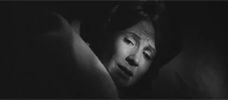
The Haunting
1963 -

Killer Klowns from Outer Space
1988 -

Shock ‘Em Dead
1991 -

Critters
1986 -

Critters 2
1988 -

The Fall of the House of Usher
1928 -

Jonestown: The Life and Death of Peoples Temple
2006 -

In the Mouth of Madness
1994 -

Winterbeast
1991 -

Black Roses
1988 -

Needful Things
1993 -
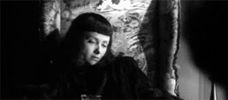
The Seventh Victim
1943 -

A Page of Madness
1926 -

Holocaust 2000
1977 -
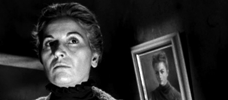
The Man and the Monster
1958 -

The Texas Chainsaw Massacre 2
1986 -

Trick or Treat
1986 -

Single White Female
1992 -

Trouble Every Day
2001 -

The Hands of Orlac
1924 -

The Devil’s Advocate
1997 -

Nocturne
1998 -

Hardware
1990 -

Hard Rock Zombies
1985 -

The Slumber Party Massacre
1982 -

Saw VI
2009 -
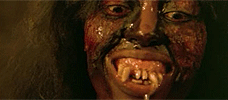
Zombi 4: After Death
1988 -
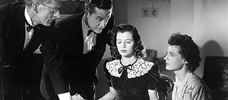
The Uninvited
1944 -

Hausu
1977
We don’t do comments anymore, but you may contact us here or find us on Twitter or Facebook.



